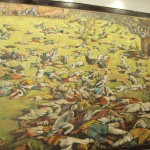MarketWatch
Personal incomes increased 0.3% in July, while spending soared ahead by 1%. As a result, the personal savings rate tumbled to negative 0.6%, the lowest since monthly records began in 1959.
Quarterly data show negative savings rates for several quarters during the Great Depression. The savings rate was negative 0.2% in October 2001 and was 0% in June.
Negative savings rates are possible if consumers spend by selling assets, dipping into savings or borrowing against future income.
Economists were expecting incomes to rise 0.5% in July, with spending expected to rise 1%, according to a MarketWatch survey.
Incomes rose 0.5% in June, while spending increased a revised 1%.
Inflation rates heated up in July with higher energy prices. The headline personal consumption expenditure price index rose 0.3%, eating up all income gains in the month. Disposable incomes were flat for the month.
Core inflation – which removes food and energy prices in order to judge underlying inflation – increased 0.1%. Core inflation is up 1.8% in the past 12 months, down from 1.9% in June and 2.2% earlier in the year.
Real spending – adjusted for inflation – increased 0.7% in July. Most of the new spending was due to the 5.2% rise in spending on durable goods, especially autos. Major carmakers offered sweetheart deals to customers in July, driving sales to one of the highest levels ever.
Excluding durable goods, real spending fell slightly. Real spending on nondurable goods fell 0.1%, while spending on services rose 0.2%.
The income gains were largely from wages, which increased 0.5%. Income from small businesses fell 0.4%, reversing strong growth over the past several years. Income from assets such as dividends and interest increased 0.5%.
In a separate report, the Labor Department said first-time applications for unemployment benefits rose by 3,000 to 320,000 last week. The four-week average of new claims rose 1,250 to 316,750.














